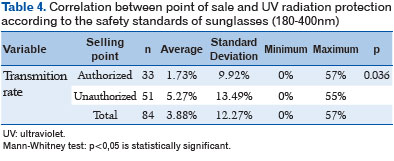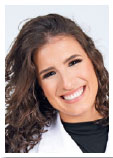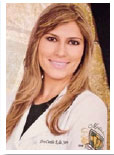Amanda de Alcântara Almeida Costa; Bianca Portal Silva; Camila Rodrigues Ribeiro; Gustavo de Paiva Castro; Mário Henrique Camargos de Lima
DOI: 10.17545/eOftalmo/2020.0016
ABSTRACT
The human eye is exposed to ultraviolet (UV) radiation (UVR) on a daily basis. The main source of UVR is the sun. Sunglasses or photoprotection glasses minimize the effects of exposure to UVR, delaying eye damage. This cross-sectional study aimed to compare the UV protection properties and safety of sunglasses sold in the formal and informal markets of the large metropolis São Paulo. The study included 84 randomly selected sunglasses that were unpaired in different regulated and unregulated trading establishments. The glasses were evaluated for transmittance of UVR and lensometry in addition to their evaluation based on the associated origin and price range. The average price of the glasses evaluated was R$106.22, with a price range of R$7.50 to R$515.00. Analyzing the transmittance of UVR in different marketing categories resulted in a statistically significant difference between the glasses from formal and informal markets. The higher the price, the lower the transmittance of UVR. Hence, the price range and origin of the photoprotection glasses were directly and statistically related to photoprotection and should serve as a reference for patient guidance in ophthalmic practice.
Keywords: Glasses; Eye protection devices; Ultraviolet rays.
RESUMO
O olho humano é exposto diariamente à radiação ultravioleta (RUV). A principal fonte de RUV é o sol. Os óculos de sol ou de fotoproteção minimizam os efeitos da exposição à radiação ultravioleta, retardando os danos oftalmológicos. O objetivo deste trabalho é comparar as propriedades de proteção ultravioleta e a segurança dos óculos de sol comercializados no mercado formal e informal de uma grande metrópole. Trata-se de um estudo transversal que foi realizado no mercado formal e informal de São Paulo. Foram selecionados 84 óculos de sol de maneira aleatória e sem pareamento em diferentes estabelecimentos de comercialização regulamentados e não regulamentados. Os óculos foram avaliados quanto a transmitância da radiação ultravioleta e lensometria e associados a procedência e faixa de preço. O preço médio dos óculos avaliados foi de R$106,22, com seus valores compreendidos na faixa de preço de R$7,50 a R$515,00. Analisando a transmitância nas diferentes categorias de comercialização, verificou-se diferença estatisticamente significante entre formal e informal. Quanto maior o preço, tanto menor a transmitância de radiação ultravioleta. A faixa de preço e a procedência dos óculos de fotoproteção estão diretamente e estatisticamente relacionados a fotoproteção e devem servir de guia para orientação dos pacientes na prática oftalmológica.
Palavras-chave: Óculos; Dispositivos de proteção dos olhos; Raios ultravioleta.
INTRODUCTION
The human eye is exposed to ultraviolet (UV) radiation (UVR) on a daily basis, the main source of which is the sun. It is believed that numerous ophthalmic diseases have a direct or indirect association with chronic or acute exposure to UVR 1. Currently, human exposure to UVR has increased significantly due to ozone layer depletion and global climate changes, which influence radiation levels on the Earth’s surface 2. In addition, the increase in expectation and lifestyle changes 1, such as the increase in outdoor acti vities and the social viewpoint that being tanned is desirable and healthy 3, increase the exposure to UVR 3. Therefore, UVR has broad implications to public health in addition to the increased incidence of eye diseases 1.
UVR is characterized by an electromagnetic wave of wavelength ranging from 100 to 400nm. The visible-light spectrum ranges from 400 to 700nm and the infrared-light spectrum ranges from 700nm to 1mm. UVR contains more energy than the visible or infrared light and, consequently, has greater potential for biological damage. The UV spectrum can also be divided into three bands: UV-A (315-400nm), UV-B (280-315nm), and UV-C (100-280nm). As sunlight passes through the atmosphere, all UV-C rays and approximately 90% of UV-B rays are absorbed by ozone, water vapor, oxygen, and carbon dioxide 3. However, UV-A rays reach the Earth’s surface almost unabsorbed 4.
The shortest wavelengths are the most biologically active and are mainly absorbed by the cornea. The longer the wavelength, the greater the proportion that passes through the cornea to reach the crystalline lens and retina 5.
Among the ophthalmological alterations secondary to photoexposure, we highlight the following: palpebral carcinomas (basal cell carcinoma and squamous cell carcinoma) 6, penguecula 1, pterygium, photokeratitis, spheroidal degeneration of the cornea 7, intraepthelial neoplasia of conjunctiva or cornea, cataract 1, age-related macular degeneration 8, and uveal melanoma 1.
The International Commission for Non-Ionizing Radiation Protection (ICNIRP) establishes safety limits for eye protection from exposure to UVR in the spectrum of 180 to 400nm for unprotected eyes 9.
The scarcity of international studies published on the evaluation of sunglasses available in market for photoprotection is evident. Bazzazi et al (2015) 4 and Keshtkar-Jafari 10 conducted studies on this topic in the Iranian market. Furthermore, another similar study was performed on children’s glasses in Colorado 11. However, to the best of our knowledge, no published research on this topic can be found in Brazil.
The aim of this study was to compare the UV protection of sunglasses sold in the formal and informal markets of a large metropolis.
METHODS
This was a cross-sectional study conducted in the formal and informal markets of São Paulo from January to July 2019. It included 84 sunglasses that were randomly selected and unpaired in different regulated and unregulated trading establishments, with different price ranges. Subsequently, they were evaluated on the transmittance of UVR.
For this analysis we used a Vision Black ® computerized lensometer with a percentage of transmittance scanned from 180 to 400nm as per the ICNIRP standards. The result was reported in percentages, according to the factory configuration of the device as the lensometer could not differentiate the UVR bands. The standard Z80.3:2001 of the American National Standards Institute was followed (<1% UV-B and UV-A transmission, transmittance <0.3 times the visual transmittance of the light) to elucidate whether the glasses were effective in protecting against UVR 12. The lower the transmittance, the greater the safety of the sunglasses.
MS-Excel spreadsheet, MS-Office version 2013, was used for organizing the data, and IBM SPSS (Statistical Package for Social Sciences), version 24.0, was used for obtaining the results. Mann–Whitney test and Spearman’s Correlation Analysis were applied while analyzing the variables of interest. Additionally, p≤0.05 was considered statistically significant.
RESULTS
A total of 84 glasses were analyzed, 33 (39.29%) sold in the formal market and 51 (60.71%) in the informal market (Table 1). The average price of glasses was R$106.22, in the price range of R$7.50 to R$515.00 (Table 2).


Analysis of transmittance in different marketing categories revealed a statistically significant difference between the glasses from formal and informal markets; thus, it can be stated that, in general, the transmittance values of glasses in the informal category were effectively higher than those of the formal category (Tables 3 and 4).


The application of Spearman’s Correlation Analysis (Table 5) for evaluating the degree of relationship between the variables of interest demonstrated that a higher price was associated with lower UVR transmittance.

DISCUSSION
Excessive ocular exposure to UVR may induce a series of eye damages 13, such as squamous and basal cell cancer of the eyelid and periorbital skin 6, pterygium 14, photoceratoconjunctivitis 15, cataract 16, and maculopathy 17.
Among the factors that ensure protection against such damages are protection against UVR, adequate polarization capacity, and lens pigmentation intensity 18. Protection against UVR seems to be the most important factor in the safety assessment of sunglasses 14.
Glasses with colored lenses but without proper UV protection result in pupil dilation due to decreased visible light, while the amount of UVR remains unchanged. Thus, the amount of UVR reaching the crystalline lens and retina increases when such glasses are used than when they are not 19. It is known that the crystalline lens absorbs almost all lights with wavelengths <400nm 20; hence, excessive UV exposure can increase the risk of cataract 16. Additionally, the crystalline lens’ ability to absorb UVR increases with age and can vary significantly among individuals 20. Besides the increased risk of exposure to UV rays, people wearing non-standard sunglasses usually tend to be more exposed to sunlight, assuming they are protected by sunglasses 21.
In 1991, a spectrophotometric study conducted by Werner (1991)11 on 40 children’s sunglasses, demonstrated that some sunglasses provided complete protection against UV rays, whereas others did not. This study also found that some labels on sunglasses about “appropriate UVR protection” can be misleading to customers. In addition, another study conducted by Otman et al (2005) on 37 sunglasses of patients undergoing photochemotherapy showed that modern sunglasses labeled “UV400” are adequate for UVR protection 22. However, cheap sunglasses with this label may also be of acceptable quality 10.
It is important to highlight the existence of colored sunglasses in the market that decrease visible light, but do not protect against UVR. Such sunglasses dilate the pupils while the amount of UVR remains unchanged, hence promoting eye damage 9.
In our analysis, 39.29% of the sunglasses were from formal sellers (Table 1), of these 97% provided effective protection against UVR (Table 3). A statistically significant difference was observed between the glasses from formal and informal markets (Table 4). On the contrary, only 80.4% of the glasses from informal markets showed adequate protection (Table 3). Our results are corroborated by those of the study conducted by Keshtkar-Jafari et al (2008) 10 in the Iranian market, wherein 100% of the glasses from authorized sellers met the safe transmittance standards, but only a low percentage of glasses from unauthorized sellers reached the same objective: only 92.1% protected against UV-B and 95.8% against UV-A.
On the contrary, another study showed an alarming rate of non-compliance with protection standards in glasses sold by unauthorized sellers, with all the evaluated glasses not meeting the acceptable standards 4.
The transmittance analysis in the different price ranges showed a statistically significant correlation wherein glasses of higher value provided greater protection from UVR transmission (Table 5). This finding was also observed in studies using methodology similar to ours 4,10.
Shape, size, usage position, and reflection from the inner (posterior) surface of the lens are other important factors that may affect the suitability of sunglasses 23. In addition, it is recommended that retention, optical quality, uniformity, and lenses correspondence, as well as robustness and overall structure of sunglasses should be considered during a quality/safety check 14,24. Therefore, although 80.4% (Table 4) of the informal glasses evaluated in this study protected against UV-A and UV-B radiation, other aspects should be analyzed for determining the quality of glasses and recommending their use to the public. However, because evaluating these aspects was not an objective of this study, further studies should be conducted to evaluate the optical quality and overall safety of glasses.
Although the glasses from the formal market provide greater protection against UVR, the glasses sold informally in Brazil are surprisingly safe. One of the hypotheses proposed is that parallel glasses are produced using cutouts from the leftovers of the formal industry, a hypothesis that was not investigated in this study. Given the immense variety of glasses available on the market and the lack of information on the safety of these products regarding UVR protection, it is extremely important that not only the ophthalmology community has the knowledge about this study but also the patients that wear sunglasses, especially those who buy them from the informal market.
REFERENCES
1. Yam JC, Kwok AK. Ultraviolet light and ocular diseases. Int Ophthalmol. 2014;34(2):383-400.
2. McKenzie RL, APJ Aucamp, BAF Bais, CLO Björnd, M Ilyase. Changes in biologically-active ultraviolet radiation reaching the Earth’s surface. Photochem Photobiol Sci. 2007;6(3):218-31.
3. World Health Organization (2002) Global solar UV index: a practical guide. World Health Organization, Geneva.
4. Bazzazi N, Heydarian S, Vahabi R, Akbarzadeh S, Fouladi DF. Quality of sunglasses available in the Iranian market; a study with emphasis on sellers’ license. Indian J Ophthalmol. 2015;63(2):152-6.
5. Young S, Sands J. Sun and the eye: prevention and detection of lightinduced disease. Clin Dermatol. 1998;16(4):477-85.
6. Diepgen TL, Mahler V. The epidemiology of skin cancer. Br J Dermatol. 2002;146(Suppl 61):1-6.
7. Taylor HR, West SK, Rosenthal FS, Munoz B, Newland HS, Emmett EA. Corneal changes associated with chronic UV irradiation. Arch Ophthalmol. 1989;107(10):1481-4.
8. Sui GY, Liu GC, Liu GY, Gao YY, Deng Y, Wang WY, et al. Is sunlight exposure a risk factor for age-related macular degeneration? A systematic review and meta-analysis. Br J Ophthalmol. 2013; 97(4):389-94.
9. The International Commission on Non-Ionizing Radiation Protection (ICNIRP) - Guidelines on Limits of Exposure to Ultraviolet Radiation of Wavelengths Between 180nm and 400nm (Incoherent Optical Radiation). Health Physics. 2004;87(2):171-86.
10. Keshtkar-Jafari A, Anvari F, Ameri A, Ahadzadegan I, Kia M, Ghotb S, et al. Ultraviolet radiation absorption by sunglasses available through iranian optician trade union and miscellaneous vendors. Iran J Ophthalmol. 2008;20(4):40-3.
11. Werner JS. Children’s sunglasses: Caveat emptor. Optom Vis Sci. 1991;68:318-20.
12. ANSI. American National Standard Requirements for Non-Prescription Sunglasses and Fashion Eyewear. New York: ANSI; 2010.
13. Tuchinda C, Srivannaboon S, Lim HW. Photoprotection by window glass, automobile glass, and sunglasses. J Am Acad Dermatol. 2006;54:845-54.
14. Dain SJ. Sunglasses and sunglass standards. Clin Exp Optom. 2003;86:77-90.
15. Sliney DH. Photoprotection of the eye-UV radiation and sunglasses. J Photochem Photobiol B. 2001;64:166-75.
16. Norval M, Cullen AP, de Gruijl FR, Longstreth J, Takizawa Y, Lucas RM, et al. The effects on human health from stratospheric ozone depletion and its interactions with climate change. Photochem Photobiol Sci. 2007;6:232-51.
17. Mainster MA, Turner PL. Ultraviolet-B phototoxicity and hypothetical photomelanomagenesis: Intraocular and crystalline lens photoprotection. Am J Ophthalmol. 2010;149:543-9.
18. Chou BR. Eye protection-sunglasses: From eyewear to eyecare. Occup Health Saf Can. 1995;11:12-9.
19. Deleu H, Roelandts R. Protecting the eye from ultraviolet A radiation during photochemotherapy. Photodermatol Photoimmunol Photomed. 1990;7:233-236.
20. Artigas JM, Felipe A, Navea A, Fandiño A, Artigas C. Spectral transmission of the human crystalline lens in adult and elderly persons: Color and total transmission of visible light. Invest Ophthalmol Vis Sci. 2012;53:4076-84.
21. Threlfall TJ. Sunglasses and clothing – An unhealthy correlation? Aust J Public Health. 1992;16:192-6.
22. Otman SGH, Edwards C, Taylor DK. The ultraviolet transmission of commonly available sunglasses: an update on their suitability for use in eye protection in photochemotherapy. Br J of Dermatol. 2005;153(Suppl: l):92-8.
23. Sakamoto Y, Kojima M, Sasaki K. Effectiveness of eyeglasses for protection against ultraviolet rays. Nippon Ganka Gakkai Zasshi. 1999;103:379-85.
24. Cole BL. Should sunglasses be required to comply with the sunglass standard? Clin Exp Optom. 2003;86:74-6.
AUTHOR’S INFORMATION




Disclosure of potential conflicts of interest: Approved by the following research ethics committee Complexo Hospitalar Padre Bento de Guarulhos: CEP Nº: 212/19
Received on:
October 1, 2019.
Accepted on:
August 22, 2020.